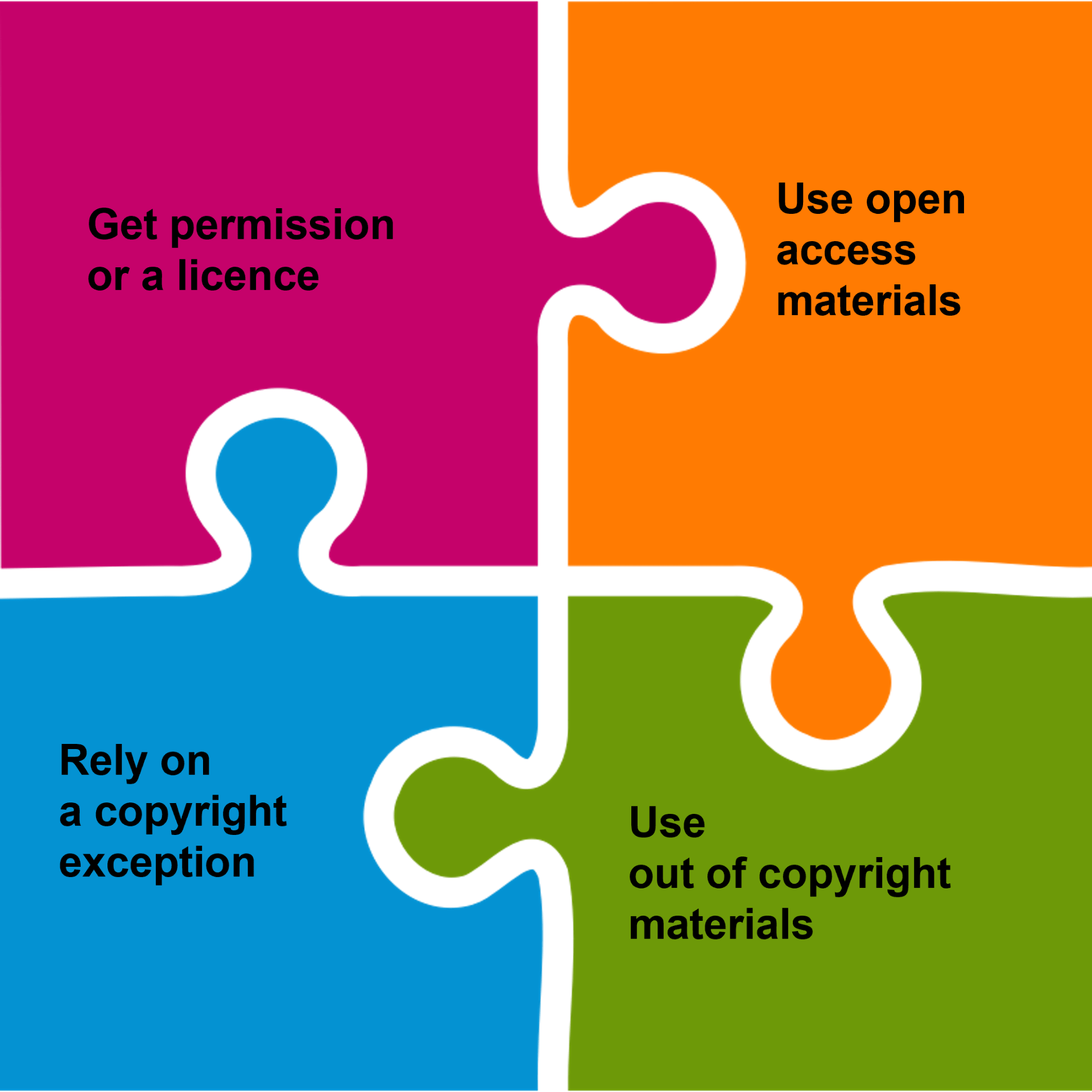This page addresses copyright related to your research publications.
The advice provided here is framed by UCL's open access policy and research funders' open access policies, which have specific requirements on licensing and sharing research publications.
Research publications, publishing agreements, and authors' rights
- Who owns the copyright to my research publications?
You do, at least in most circumstances. This is defined by the UCL IP Policy.
Members of staff: the default legal position is that an employer owns any intellectual property rights, including copyright, created by an employee in the course of employment. UCL waives this right in the case of the copyright in scholarly articles, conference papers, monographs and other research publications created by its employees in the course of employment. However, there are some very significant exceptions where UCL does claim ownership and these are listed in the policy. The exceptions include patents, design rights and computer software.
Where you own the copyright to your publications, UCL claims a wide-ranging licence to reuse "…academic and teaching materials in all formats (now known or yet to be devised), which are generated by members of staff arising out of employment by UCL."
Students: the general position of the UCL IP Policy is that you would own the copyright and other forms of intellectual property in your own work. There are some significant exceptions, which may apply if for example your research is part of a larger collaborative project or if it is funded by an external organisation. If one of the exceptions applies, then as a research research student you may be required to assign your intellectual property rights, including copyright, to UCL.
If you are one of a number of co-authors in a publication, then the copyright will probably belong to you jointly with your fellow authors.
In the first instance, therefore, you would usually own copyright to your publications. However, when publishing your research you might be asked to assign the copyright to the publisher. By doing so you restrict how you may reuse your own work. See rights retention for more information on this.
- I had an article accepted in a journal and was sent a copyright transfer agreement to sign. Why is the publisher asking me to transfer copyright to them?
Most publishers in traditional (subscription) journals ask you to sign a copyright transfer agreement on acceptance. Publishers may state various reasons for requesting this; for example claiming that, by transferring your copyright to them, you enable them to manage reuse requests, to protect the article against infringement, to protect its integrity, and to increase the visibility of the article through various parties.
By assigning your copyright you lose any control on how it is reproduced in the future. You may find you need the publisher’s permission if you want to reuse your own work subsequently; for example, to make your work available in an open access repository, use your publication in your teaching, or include it in a future work. For this reason, it is worth considering whether there are alternatives available which allow you to retain the copyright, such as granting the publisher a non-exclusive licence to publish the work. Where possible, you should try to negotiate the details of the agreement with the publisher if you are unhappy with the details.
- What is the difference between a copyright transfer agreement and an exclusive licence?
Some publishers may offer you an option to retain your copyright and sign an exclusive licence (often called 'licence to publish') instead. In practice, an exclusive licence means that you have the same restrictions reusing your work as you would if you had signed away your copyright. The publisher will still be granted rights that no one else (including you) will have, including publishing and distribution rights of the work in any media, now and in the future, and the right to give permission to others to reuse your work.
Usually these terms would apply from the point of acceptance, meaning that you would not be able to share your accepted manuscript with others unless the publisher gave you permission to do so.
- What should I consider before signing a publishing agreement?
You should look closely at the small print of any contract rather than rushing to sign. Where possible, try to look at the agreement as early as possible - ideally, before you submit to a journal or commit to writing a monograph or book chapter. The following checklist includes several points you may want to consider.
Ownership
Check that you still have the right to publish, that you have not already assigned the copyright to someone else or granted someone an exclusive licence.
Reusing your work
Consider the listed actions. Which ones apply to you? Does the publisher agreement prevent you from using your work in the following ways? If the agreement you are asked to sign prevents from reusing your work, there are things you can do allowing you to retain these rights.
- Make the work (e.g., article, book chapter, monograph) available in an open access repository, as soon as it is accepted for publication, and at the latest as soon as it is published. Also onsider any funder requirements that may apply here.
- Make the work reusable by others, i.e. by making it available under a Creative Commons licence.
- Be able to share a preprint of the work. Some copyright transfer agreements may ask you to sign away exclusive rights to the preprint version, and this may affect your ability to continue sharing the work in this way.
- Share your work on social media, including academic social networks such as ResearchGate.
- Reuse the work in your teaching, e.g. share it with students as part of a module or reuse parts in a lecture.
- Reuse as part of public engagement activities.
- Be able to give permission to others to adapt (e.g., translate) the work or reuse the work in other ways.
- Reuse in future works, such as an anthology.
- Reuse in a thesis.
Moral rights
In UK copyright law, moral rights include the right to be attributed as the author of a work, the right to object to derogatory treatment of the work (e.g., any changes to your work that would distort it or damage your reputation as an author) and the right to object to false attribution. If you do decide to assign your copyright to the publisher, you can still assert your moral rights by striking out any clause asking you to waive these rights.
Additional considerations for books
Book contracts will differ from standard copyright transfer agreements or licences for journal articles. Points besides copyright that need to be addressed may include delivery timescales (e.g., delivery of manuscript by the author, delivery of proof copy by the publisher, production timescales); royalties; cancellation clauses etc. As with copyright, it is advisable to read the contract carefully and seek advice or challenge certain points if necessary.
- What can I do to make sure I have the right to reuse my publications?
You may have several options. The one you choose will partly depend on the options offered by the publisher, on what funds are available to support some of these options, and on your willingness to negotiate with the publisher.
Publish open access
Open access publishing options may be available. If a journal or a book publisher offers an open access publishing option, there may be costs to publish open access. Look up UCL open access funding options for journal articles and for monographs and book chapters. UCL Press offers open access publishing at no cost for UCL authors.
Publishing open access ensures that your article is immediately and freely available online and that it is also licensed in a way that allows others to reuse it in specified ways, and with attribution to you. This is ensured by publishing the work under a Creative Commons licence. In most cases, the recommended licence to choose in open access publishing is the Creative Commons Attribution licence (CC BY).
Publishing open access does not in itself affect your ownership of the copyright in your work. While it is usually the case that, when publishing open access, you retain copyright and normally make the work available under an open licence, it is still recommended that you check the details of your agreement with the publisher to understand how the ownership of your copyright is affected, and which licence is applied.
Sign an agreement or licence to publish; but try to negotiate specific reuses of your work
Open access publishing is not always available or possible. If you publish via the traditional (subscription) model, you may decide to sign the agreement or licence you sign offered to you by the publisher. Terms in the agreement may still allow you to reuse your work in specific ways; for example, to post the accepted manuscript in an open access repository, usually with a delay (embargo) of 12-24 months after publication; to use parts of the work in your teaching; and to reuse in am anthology or in a thesis.
You may want to check a publisher's policy regarding how you allow you to share your work before you even submit an article or book proposal. If possible, try to find or ask to read the publisher's standard copyright transfer agreement early on; or check your journal's policy; there is also some information on related policies for books. You may want to suggest changes to the agreement, to ensure that certain reuses important to you are permitted.
While many publisher agreements will allow you some reuse, the terms of reuse can still be very restrictive; and the publisher, holding the copyright or an exclusive licence to your work, is still in control of your work in every way other than the permissions they grant you. In terms of open access, embargoes and a lack of a licence that allows maximum reuse (Creative Commons) are at odds with the aims of open access, which call for immediate and unrestricted availability of the work. In principle your paper could be publicly available in an open access repository and still be "all rights reserved": people would be able freely to read your work, but they would still need the publisher's permission to reuse it in any way. It is worth keeping this in mind when you choose to publish in a particular journal or with a particular publisher.
Rights retention
Rights retention is a simple way to assert your rights to your accepted manuscript early on: at the time of submission. This will allow you to make your work open access, and also to reuse it in many other ways, for example share it with your students, post it on social networks etc.
To apply rights retention, you need to act on submission. For more information, see the rights retention section.
Rights retention
- What is rights retention?
Rights retention enables you to reuse your publications in your research and teaching and to share them publicly with others. This offers you more freedom as to where you publish and how you reuse and share your publications, including making them Open Access in line with funder and REF requirements.
With respect to research articles and conference proceedings, rights retention is ensured via a relatively simple mechanism where you retain the rights to your author accepted manuscript at the time of submission and apply an open licence (usually a Creative Commons Attribution licence; CC BY or CC BY-ND) to this version. By doing so, you ensure that the accepted version of the article is immediately open and reusable at the point of publication, without the need for permission or negotiation with the publisher.
- How does rights retention help me as an author?
Rights retention has several benefits for you:
- By asserting the rights to your peer-reviewed, accepted manuscript, you can make your article open access immediately on publication: publisher open access embargoes no longer apply.
- Applying a Creative Commons licence to your accepted manuscript means that, while you own the copyright, you allow others to share and reuse it with attribution to you. This means your research can have a far-reaching impact.
- Retaining rights to your research articles means that, in cases where open access publishing is not possible, you can still make your research open access, in line with funder and REF requirements. This widens your choice of publication avenues, as you do not need to worry whether a journal offers a compliant open access policy or publication option.
- Retaining rights also means that you can do many other things with your own work that normally a publisher would not allow you to do if you had assigned the copyright or exclusive rights to them. For example, you can share the accepted version with students and industrial partners, post it on platforms such as SSRN and ResearchGate, and use it for public engagement activities.
- By supporting rights retention, you also help make scholarly communication more equitable and sustainable, both for authors and readers. You help remove fiancial and legal barriers that prevent research from being openly disseminated and reused: barriers often imposed on the authors themselves.
- How do I apply rights retention?
When you submit to a journal, add a short statement in: (a) the cover letter and (b) the funder acknowledgement section, indicating that you will apply an open licence (usually a CC BY licence) to any accepted manuscript arising from the submission.
If you are funded by UKRI or the Wellcome trust, the funders provide a set statement for you to include. You may also use these statements for articles not funded by UKRI or the Wellcome trust. For more information, please see the Open Access website.
Using copyright materials in your publications
- I want to include copyright materials (for example, a figure) in an article I am about to submit for publication. Do I always need to get permission?
Publishers expect you to get permission to include any copyright materials in your journal article.
- Check your publisher's own guidelines on this.
- You don't need permission to include materials that are out of copyright, original materials created by you and for which you own the rights, or materials published open access under a Creative Commons Attribution (CC BY) licence. You may still need to provide evidence or a declaration that you can reuse them (e.g., a a link to the open access/CC BY article).
- You normally need permission to include any other copyright materials. If the materials were created by you and published in an article, you will still need permission to reuse them if the publisher has the copyright or an exclusive licence to your article. Similarly, you will need permission to include materials licensed under a CC BY-NC licence (as permission is required for any commercial reuse).
- If the materials were included in an article published by the same publisher as the one you are submitting to, often permission is not necessary to reuse them. Please check with your publisher.
- You submit permission requests for a lot of published content via the RightsLink site. You will need to create an account to do this. Some publishers prefer that you contact them directly. The STM Association has a useful set of permissions guidelines, including a list of publisher contact details with instructions on how to request permission.
- Whether permission is required or not, you should always credit the source.
- Is there anything else I need to consider when I use copyright materials in an open access publication (for example, an open monograph)?
Yes; there are some additional points to address.
- When seeking permission to include materials in an open access publication, you should make it clear to the rights holder that your publication will be open access under a particular open licence (e.g., CC BY).
- If the copyright owner is reluctant to have their work included in another work with an open licence, they may agree to their materials being included under a copyright disclaimer or a more restrictive licence than the rest of your publication. For example, your book may be licensed under a CC BY licence but include images that are not openly licensed and have been included with permission. In these cases, you should include the copyright notice with the image. You should also make it clear that any licence you have published under does not apply to all the content. A statement such as 'Unless otherwise stated, this work is licensed under a Creative Commons Licence' helps clarify that third-party materials are excluded from your licence and may not be reused without permission.
Further resources:
 Close
Close






